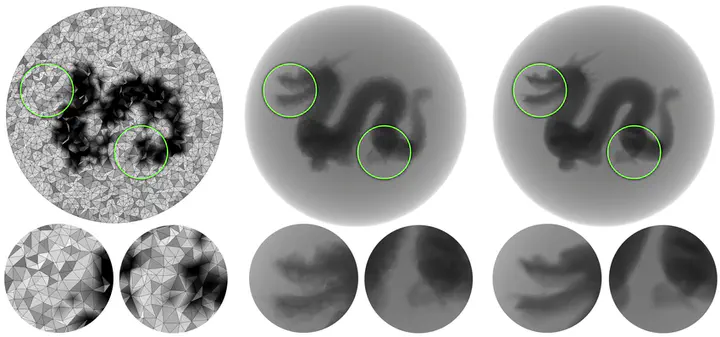
Abstract
We propose a novel GPU-based approach to render virtual X-ray projections of deformable tetrahedral meshes. These meshes represent the shape and the internal density distribution of a particular anatomical structure and are derived from statistical shape and intensity models (SSIMs). We apply our method to improve the geometric reconstruction of 3D anatomy (e.g. pelvic bone) from 2D X-ray images. For that purpose, shape and density of a tetrahedral mesh are varied and virtual X-ray projections are generated within an optimization process until the similarity between the computed virtual X-ray and the respective anatomy depicted in a given clinical X-ray is maximized. The OpenGL implementation presented in this work deforms and projects tetrahedral meshes of high resolution (200.000+ tetrahedra) at interactive rates. It generates virtual X-rays that accurately depict the density distribution of an anatomy of interest. Compared to existing methods that accumulate X-ray attenuation in deformable meshes, our novel approach significantly boosts the deformation/projection performance. The proposed projection algorithm scales better with respect to mesh resolution and complexity of the density distribution, and the combined deformation and projection on the GPU scales better with respect to the number of deformation parameters. The gain in performance allows for a larger number of cycles in the optimization process. Consequently, it reduces the risk of being stuck in a local optimum. We believe that our approach will improve treatments in orthopedics, where 3D anatomical information is essential.